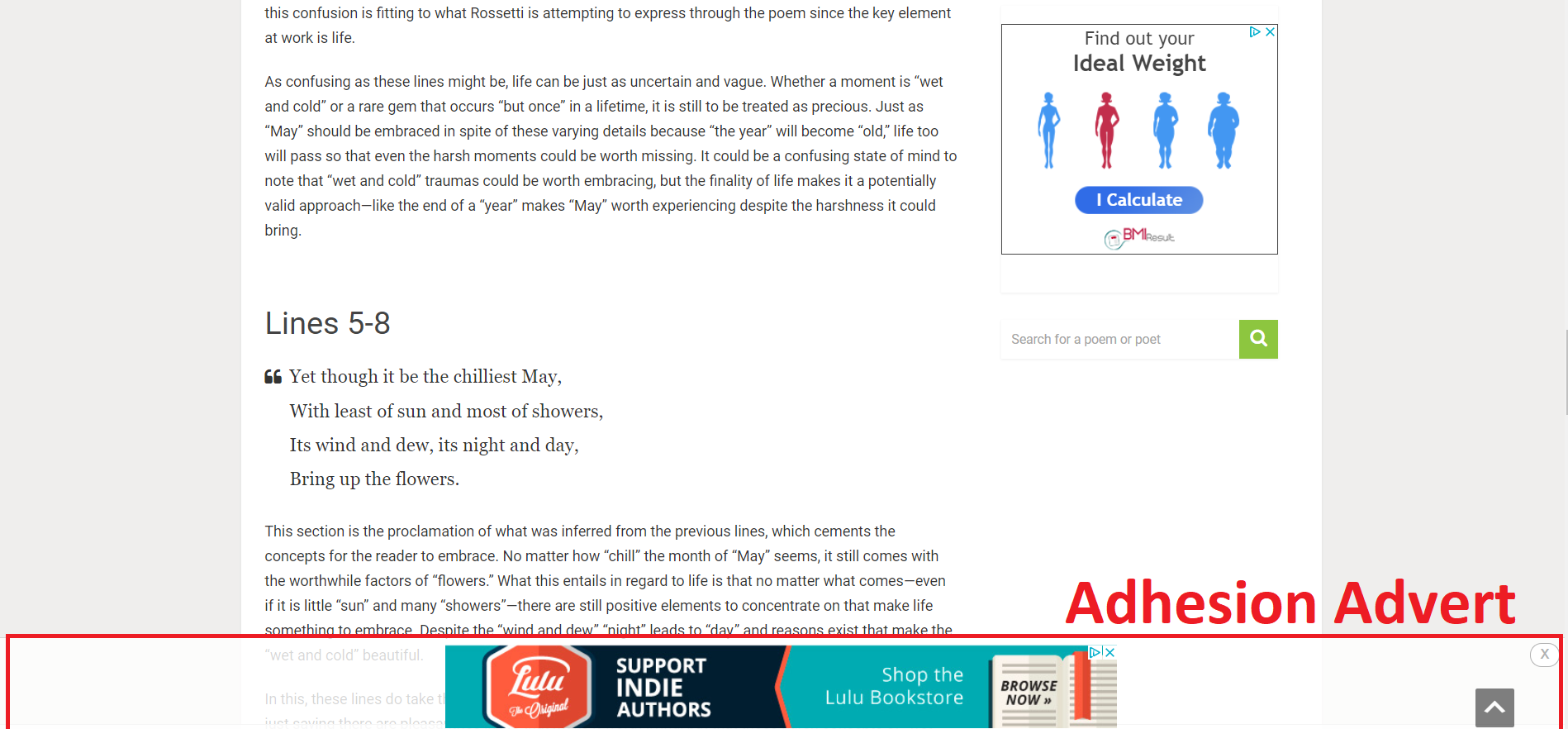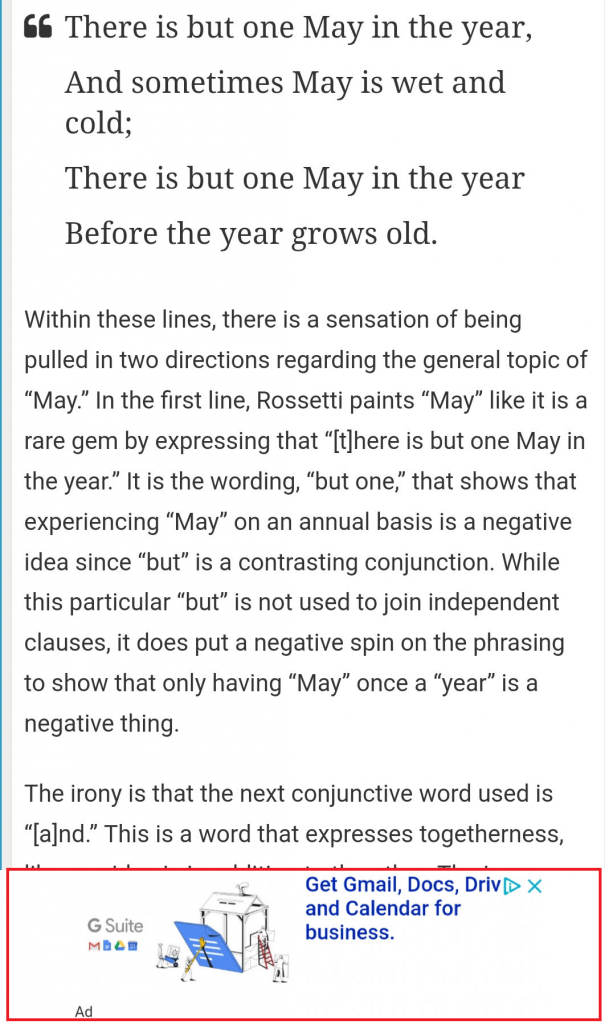Since display advertising first became mainstream in pay per click advertising, we have seen a wide range of advertising units introduced, to benefit different devices and locations on a website. The latest ad unit to come to PPC comes in the form of a unit called an ‘adhesion advert’. With this, here is everything you need to know about the adhesion advert.
What is the Adhesion Advert?
The adhesion advert is a ‘sticky’ advert which sits at the bottom of a web browser. By ‘sticky’ the advert still shows, independent of the web user scrolling. This ultimately means the advert gains more exposure, resulting (hopefully) in a greater number of clicks for both advertisers and publishers.
Adhesion adverts also appear for mobile devices too, as made clear below:
With this advert, there are pros and cons associated to it:
Pros:
- Increase revenue for publishers
- More exposure for advertisers
- Can be closed by clicking the ‘x’ (only on desktop)
Cons:
- Web user’s experience on website decreases as more spaced covered by adverts
- Can ruin the look of a website
- Takes up a lot of room
Evaluation of the Adhesion Advert
Ultimately, I think it is a welcome addition to PPC for there to be an inclusion of a sticky advert.
It is no coincidence that the more exposure an advert gets, the more clicks onto it the advert will receive. For this reason, it makes perfect sense to utilize an adhesion advert.
Yes, it does take up space and reduce the user experience on a website. However, what should be made abruptly clear is that the advert can be closed by the web user on desktop and that the space to the left and right of the advert is semi transparent, allowing the web user to see the content of the website underneath it still – this limits how much space the adhesion adverts seemingly takes up.
Already since using the adhesion advert, in addition to my whole inventory at Ezoic, I have seen an increase in my EPMV (earning per thousand visitors) increase by roughly 15%, without any major negative impacts to my website’s health. If all publishers achieve similar results, what is there not to like about the adhesion advert?
What should be noted, though, is how the adhesion advert is incorporated into your website. It is common for websites to have cookie notices and pop-ups appear at the bottom of websites (and links such as to live chat). If the adhesion advert is present, does this cause all functionality behind the advert to disappear – if so, then certain websites with functionality lower on their page might not suit adhesion adverts.





